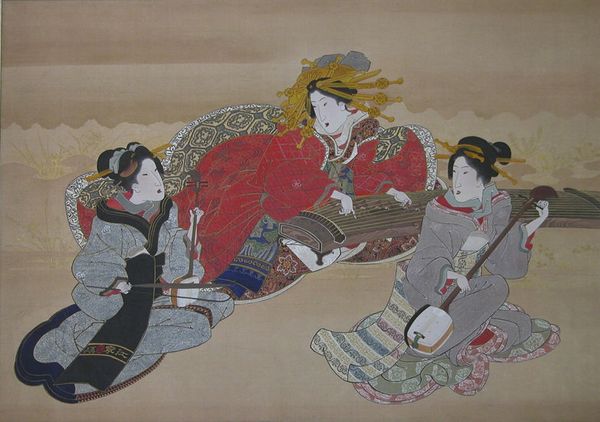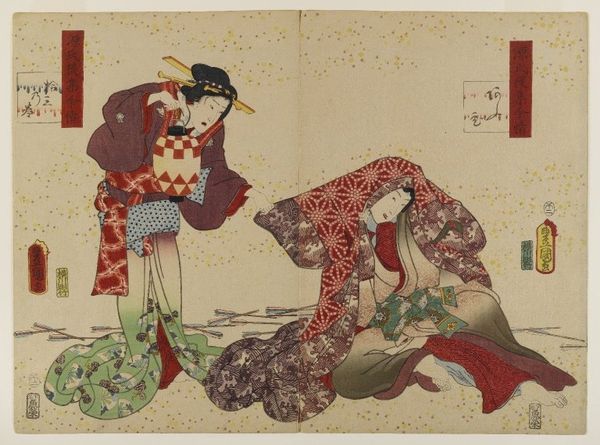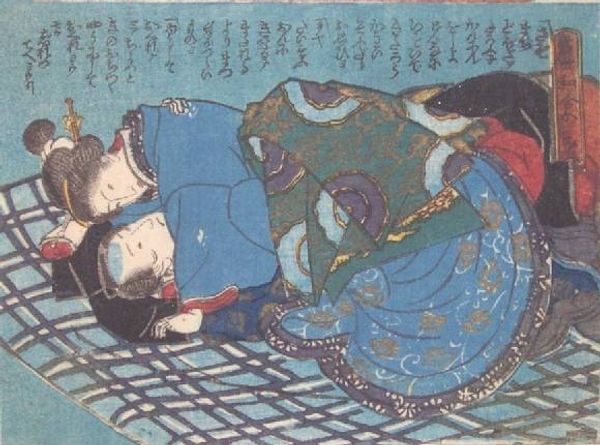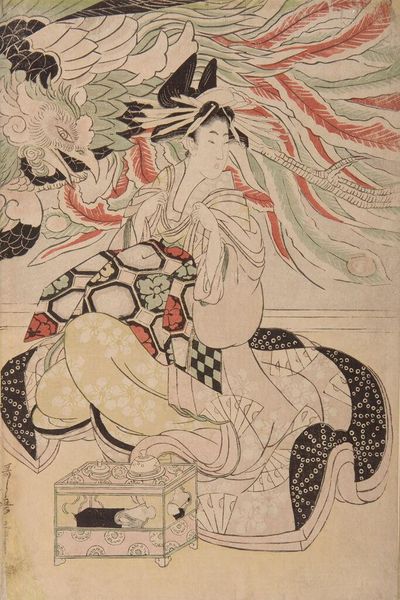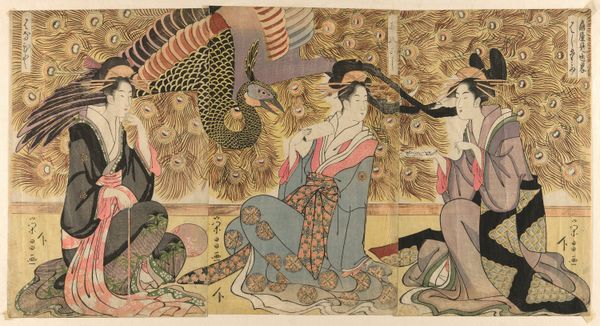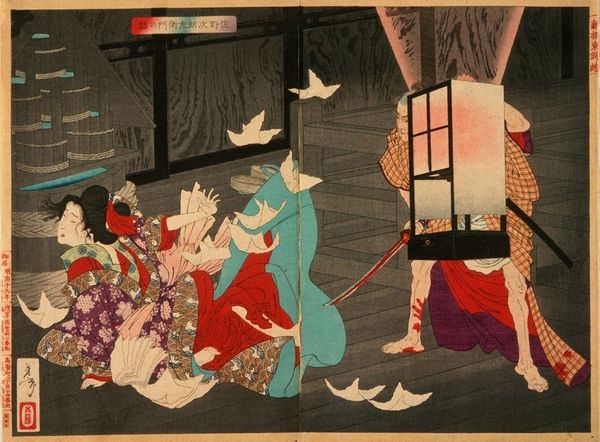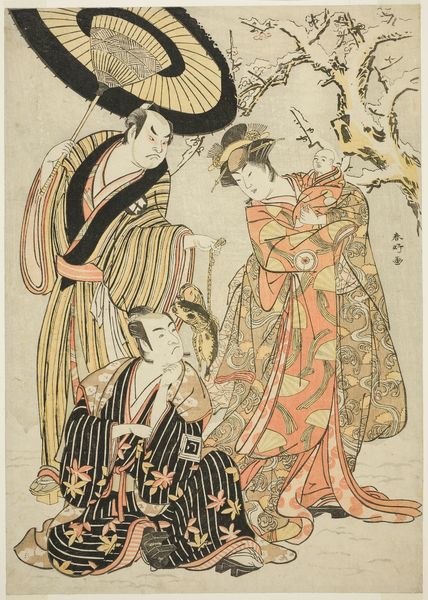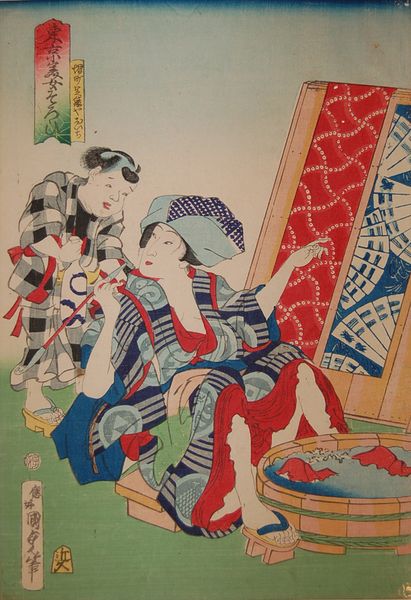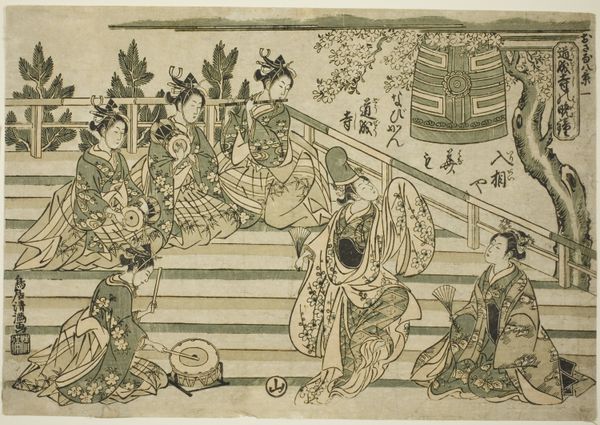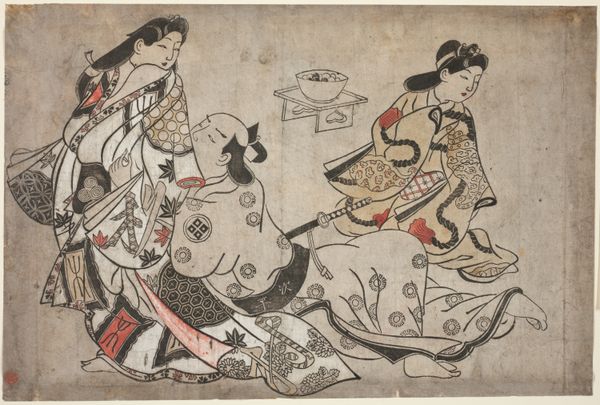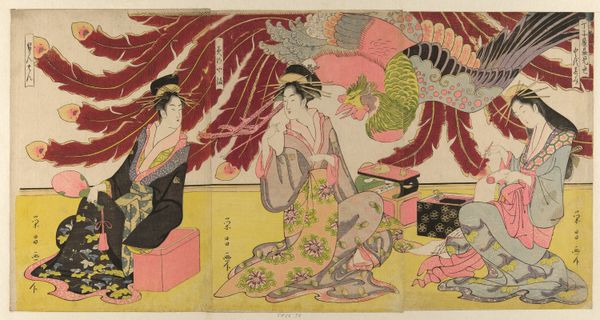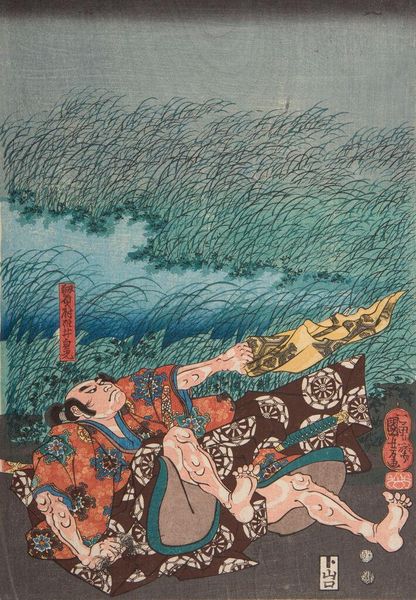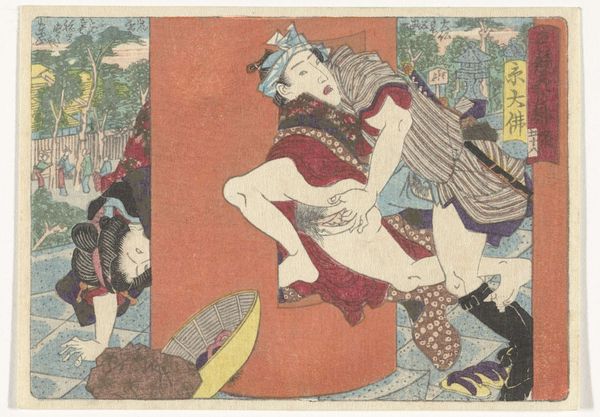
tempera, print, oil-paint, textile, paper, ink, woodblock-print, pastel
#
portrait
#
tempera
# print
#
oil-paint
#
asian-art
#
textile
#
ukiyo-e
#
paper
#
ink
#
woodblock-print
#
romanticism
#
naive art
#
watercolour illustration
#
genre-painting
#
pastel
#
erotic-art
#
calligraphy
Copyright: Public domain
Curator: Let's turn our attention to this intriguing woodblock print entitled "Foreplay on a Red Futon," created around 1835 by Utagawa Kunisada. Editor: The immediate impression is striking: this feels almost claustrophobic. The composition is dominated by a bold, patterned red futon which really amplifies the intimate, slightly awkward interaction of the two figures. Curator: Awkward is an interesting observation! Considering Kunisada's societal position, creating Ukiyo-e prints like this one wasn’t simply artistic expression, but engagement in popular culture. These images circulated widely and depicted not just idealised beauties, but a spectrum of social realities. They are an active form of recording contemporary trends. Editor: Absolutely, and thinking about it now, I’m very curious about how gender and power operate here, given the historical constraints on women's agency and expression in Edo-period Japan. Does the seemingly constrained space mirror their societal limitations? I’d imagine a very small world for both. Curator: It's a crucial lens. However, it’s equally vital to consider Kunisada’s role in popularising Kabuki actor prints. In light of that, this scene becomes a stage, and the participants perform roles as much as enacting a private moment. Editor: I hadn’t considered the element of performance! I do still read some sense of voyeurism that plays on orientalist tropes through the erotic theme here. Who gets to see these images, and what desires are they tapping into? I also ask, is it actually progressive at all? Curator: True; erotic art is always fraught, given the inherent power dynamics. But perhaps these prints, precisely because they catered to a broad audience, offered some avenue—albeit complex and mediated—for exploring sensuality and relationship roles. In contrast to art designed only for the upper class, these are often interpreted through what power everyday citizens had and didn't have. Editor: So in the end, we arrive at something so intricate; It’s visually stunning, and simultaneously complicates historical readings around sexuality, class, and visual culture of that era. Curator: Precisely. A compelling intersection of aesthetics, history and enduring societal questions, if I may add.
Comments
No comments
Be the first to comment and join the conversation on the ultimate creative platform.
